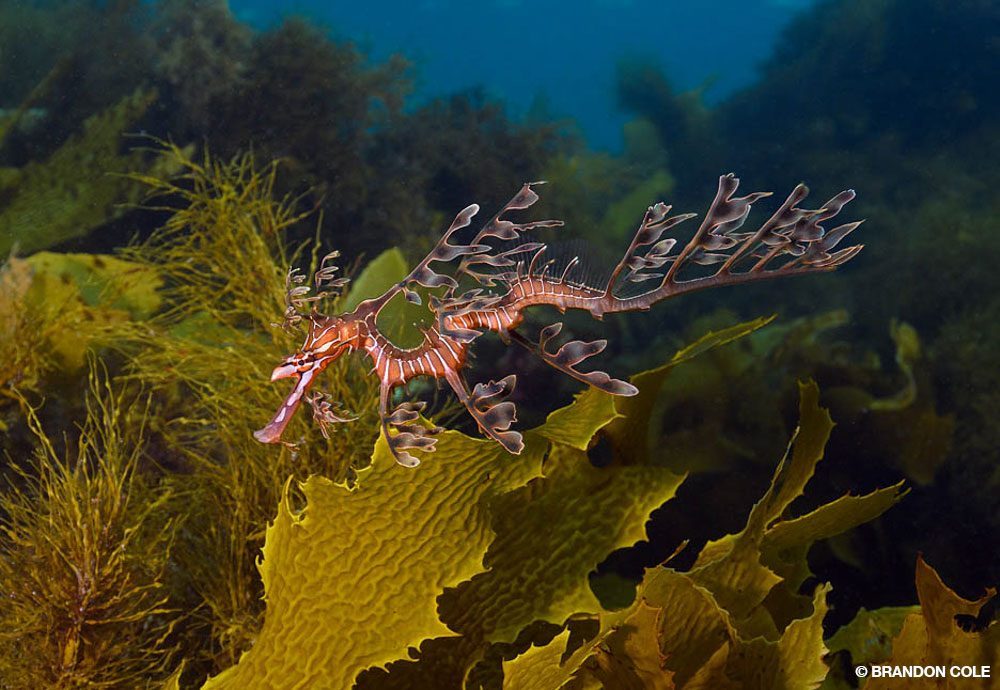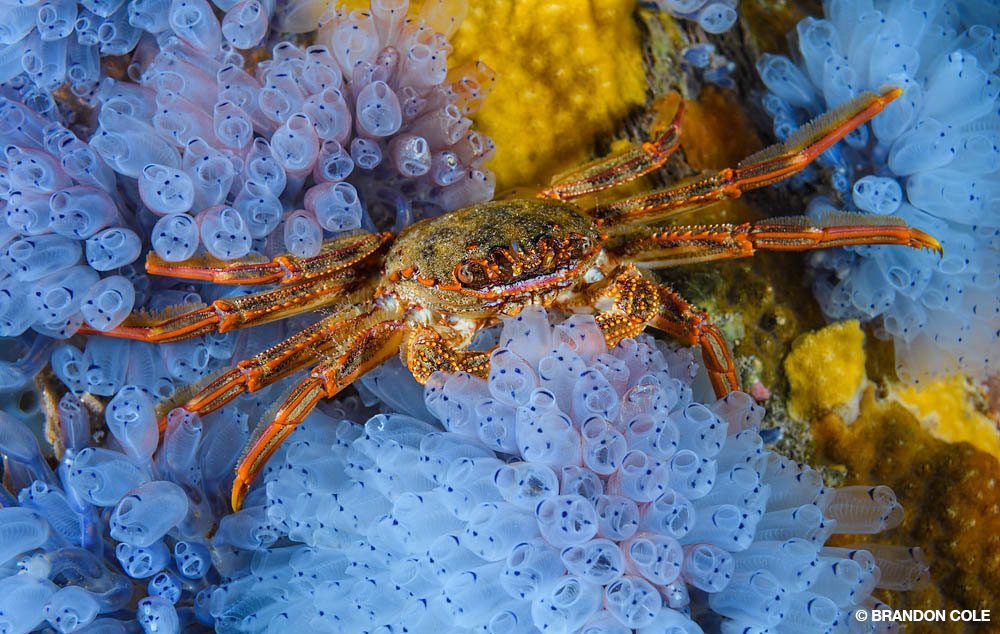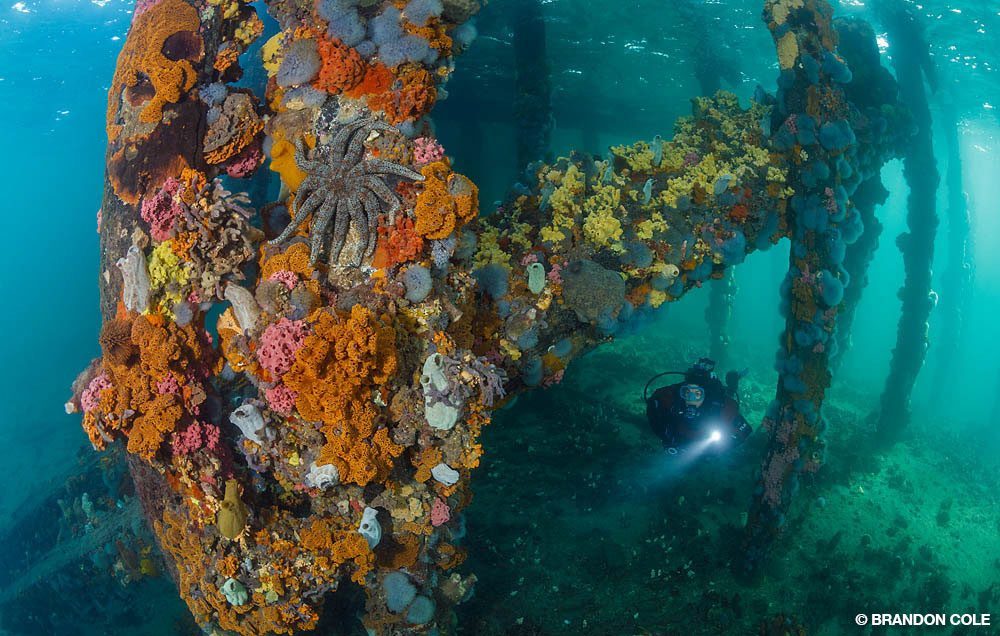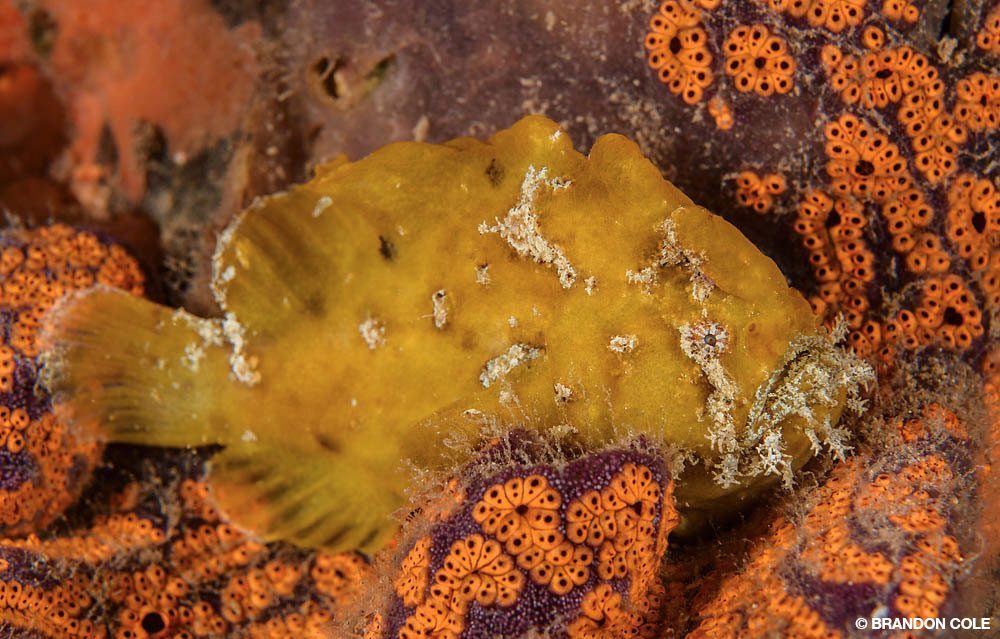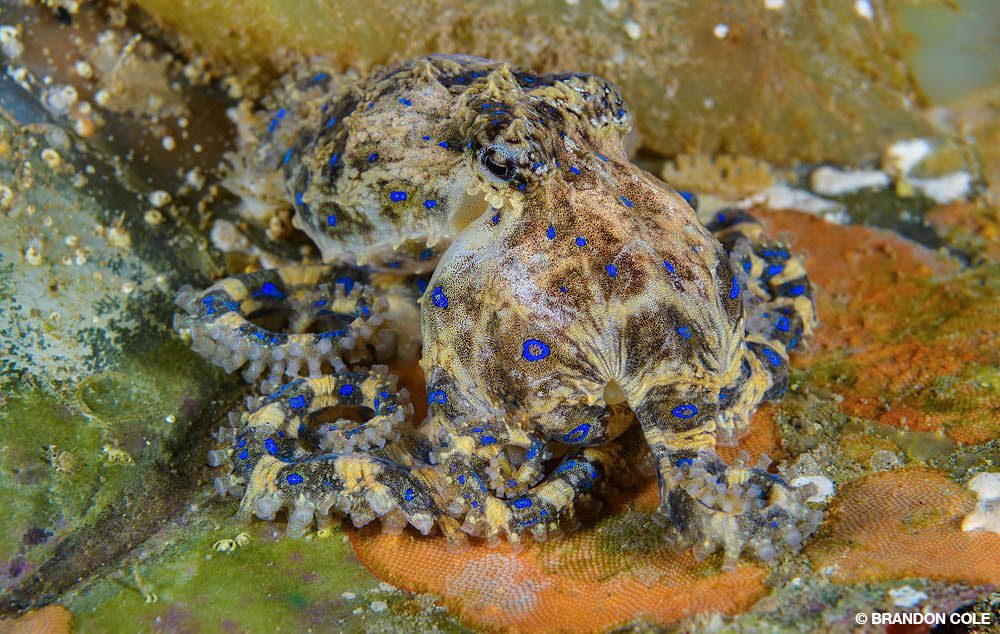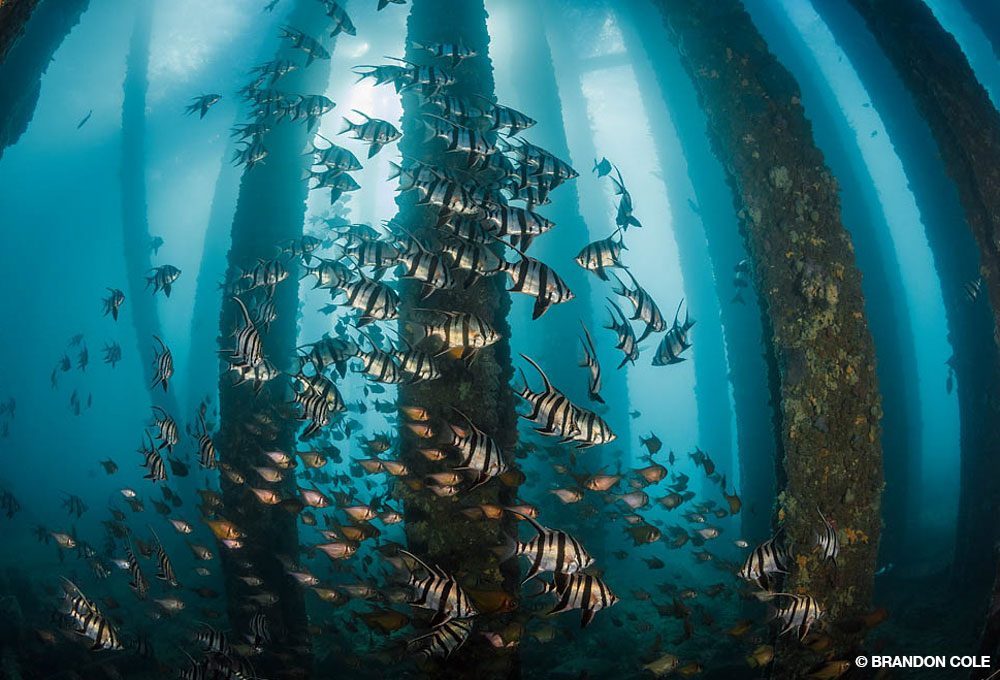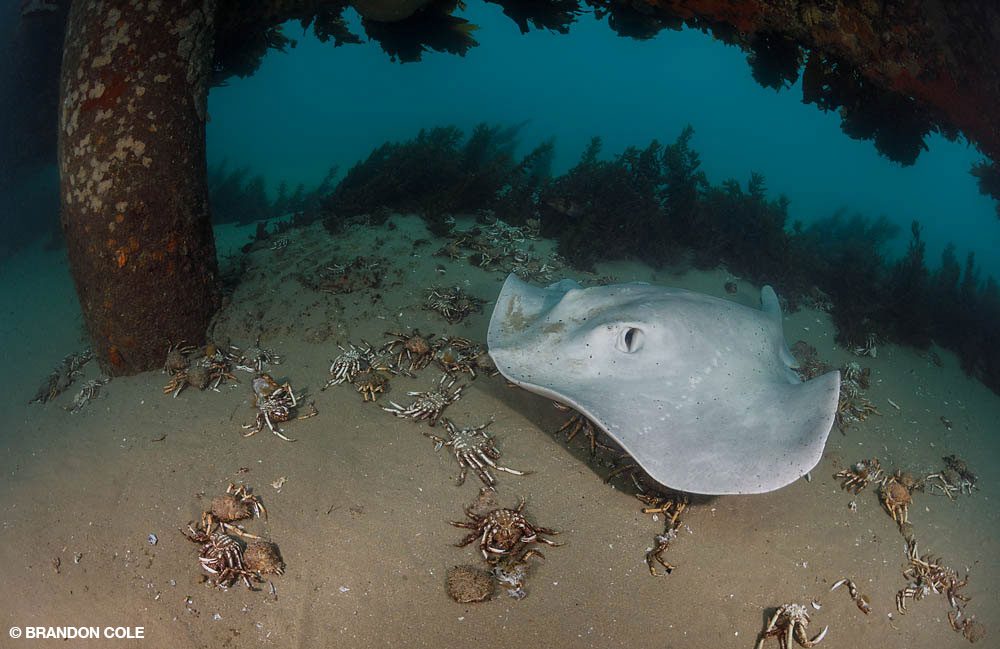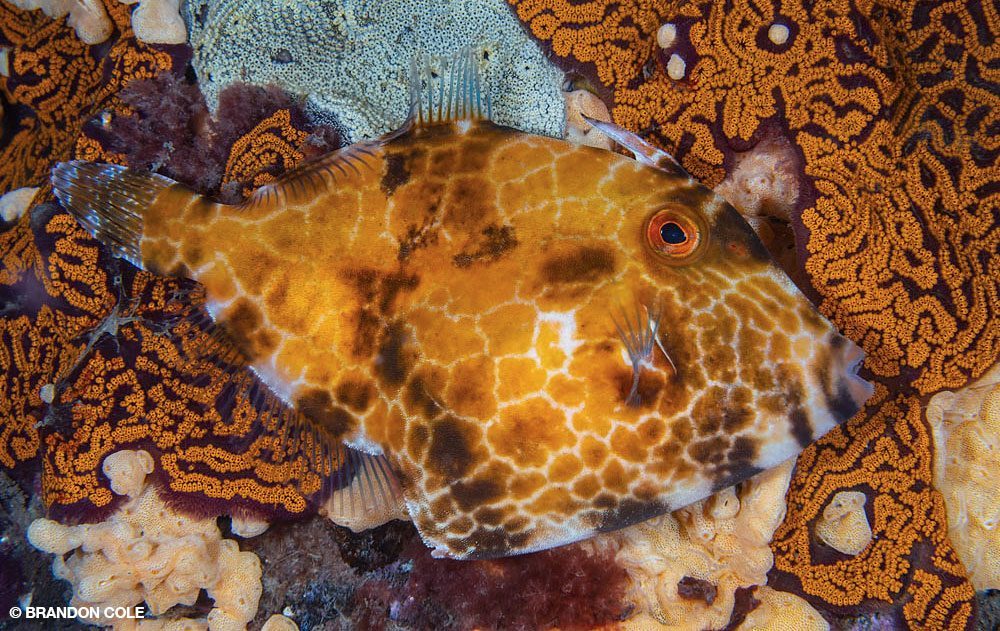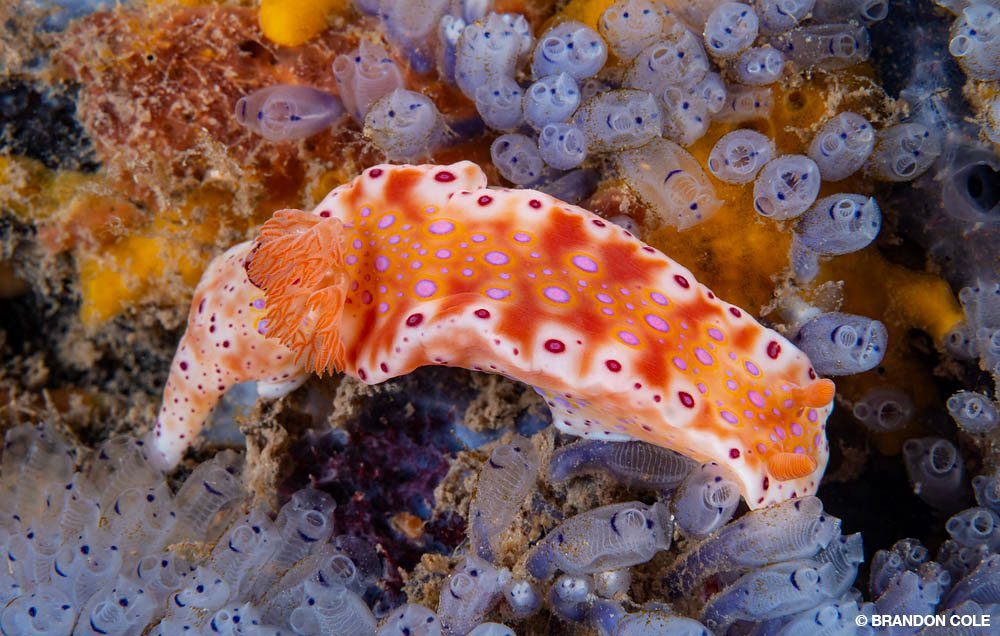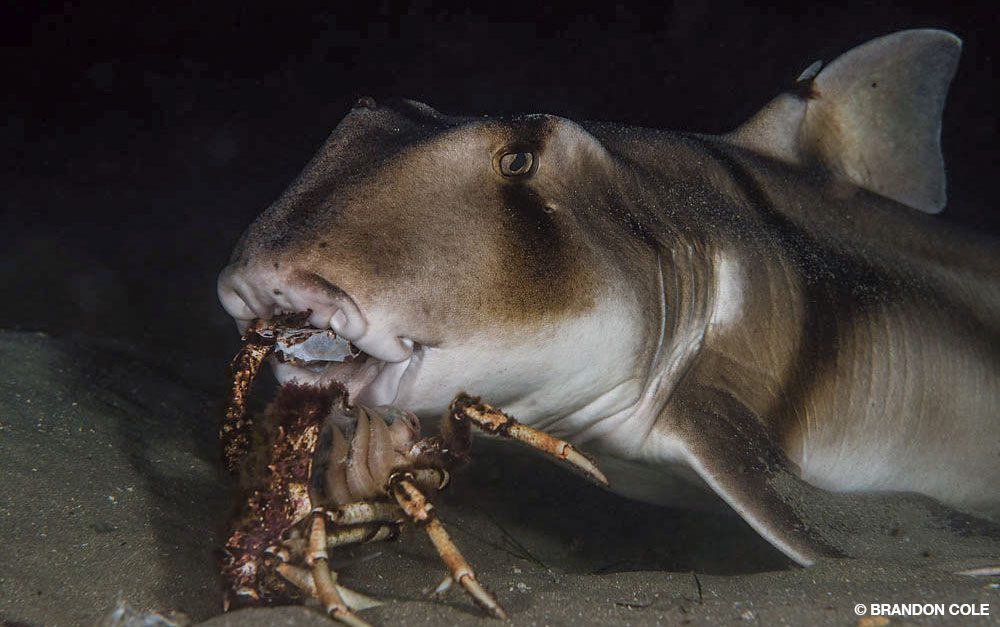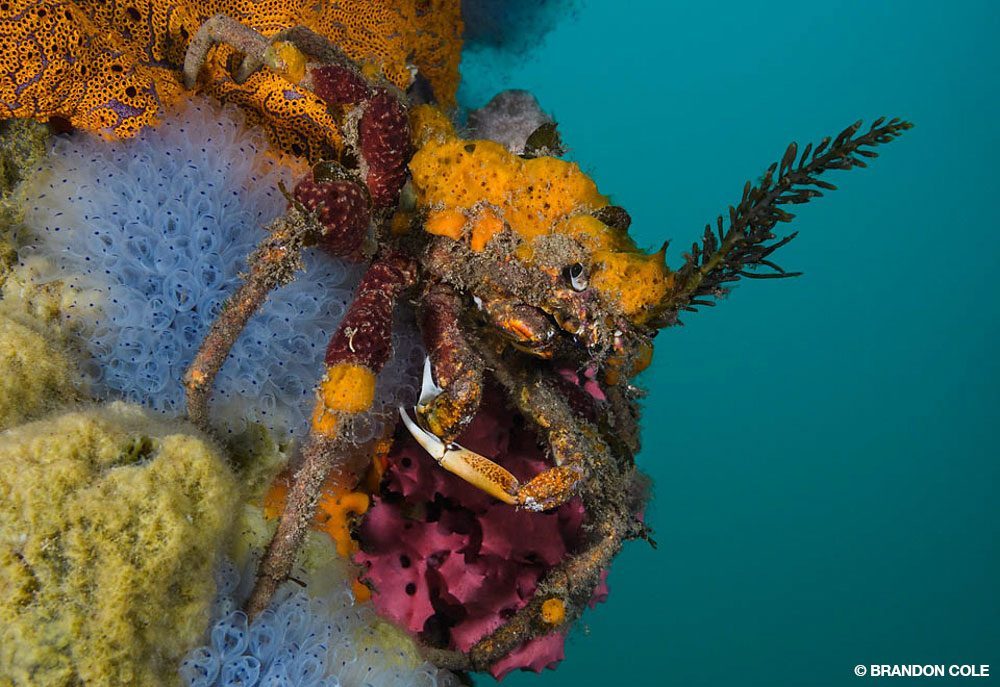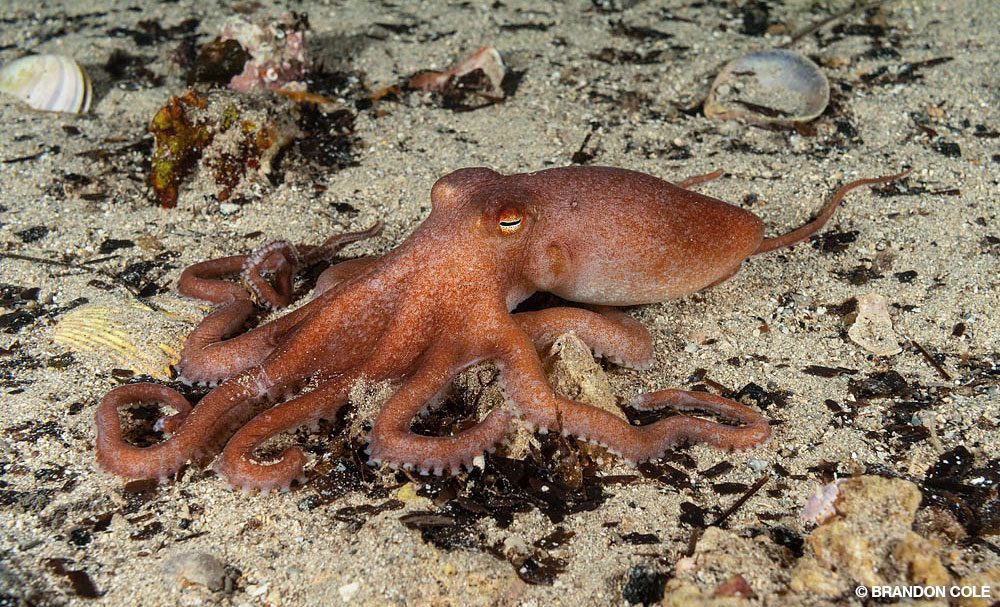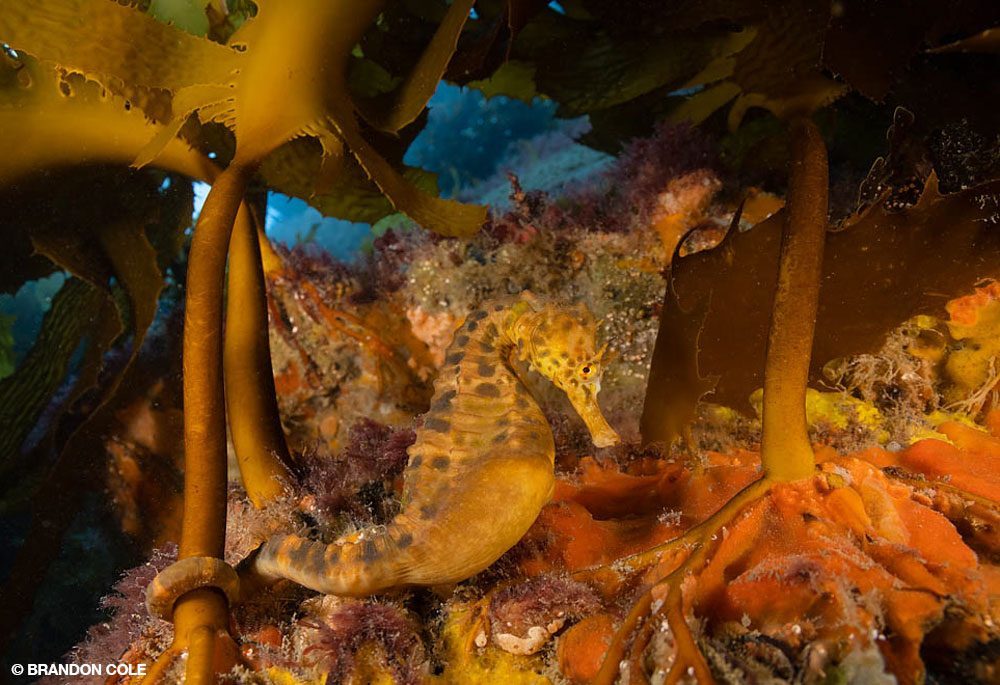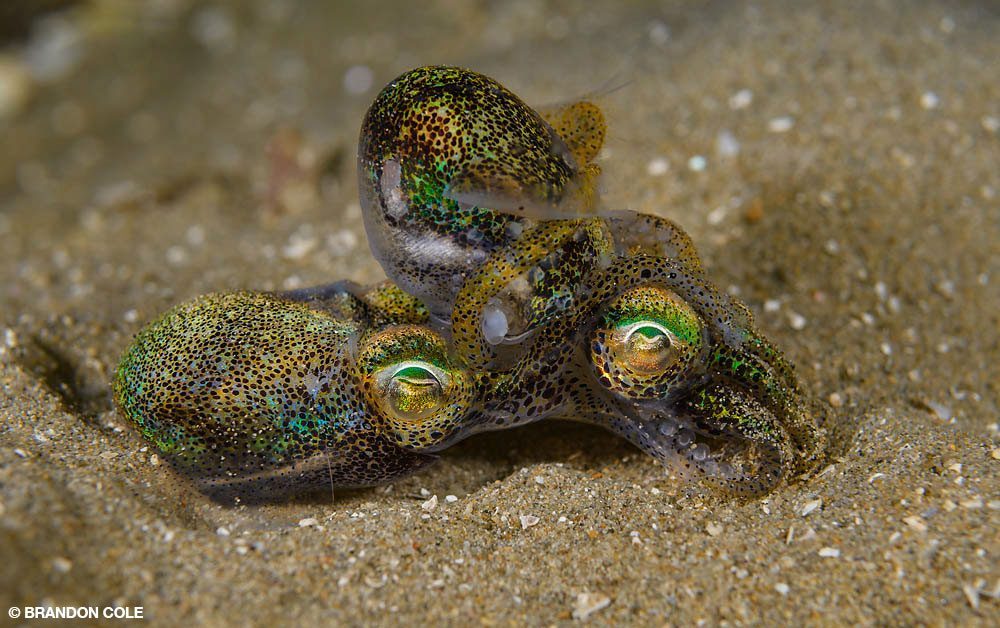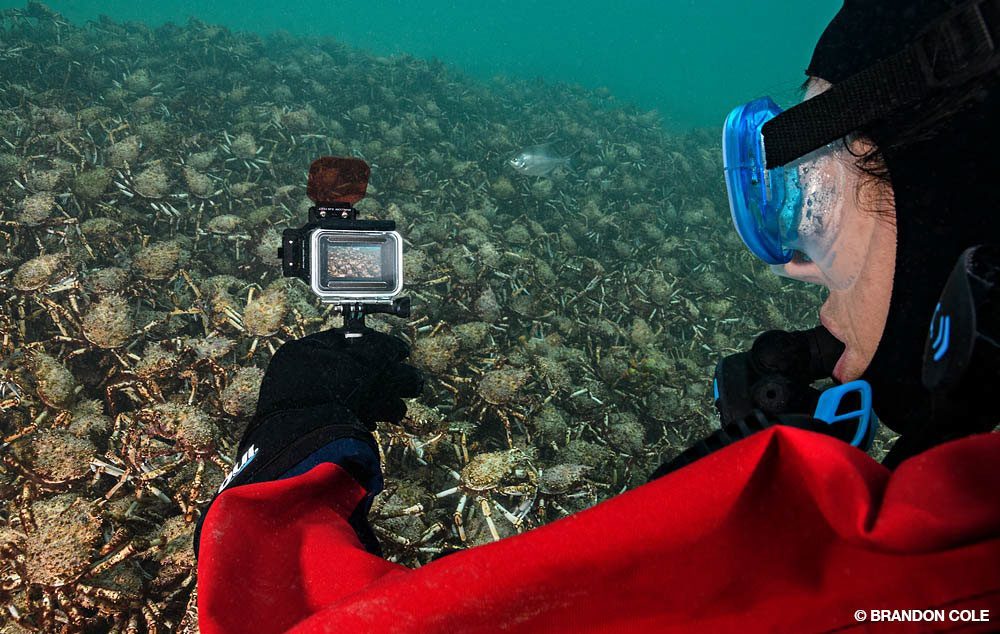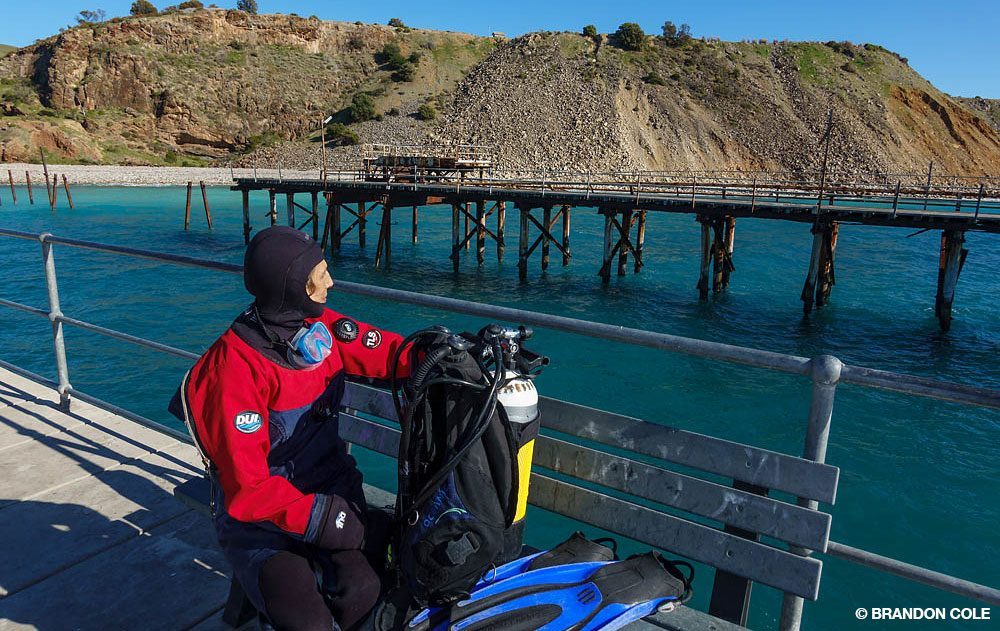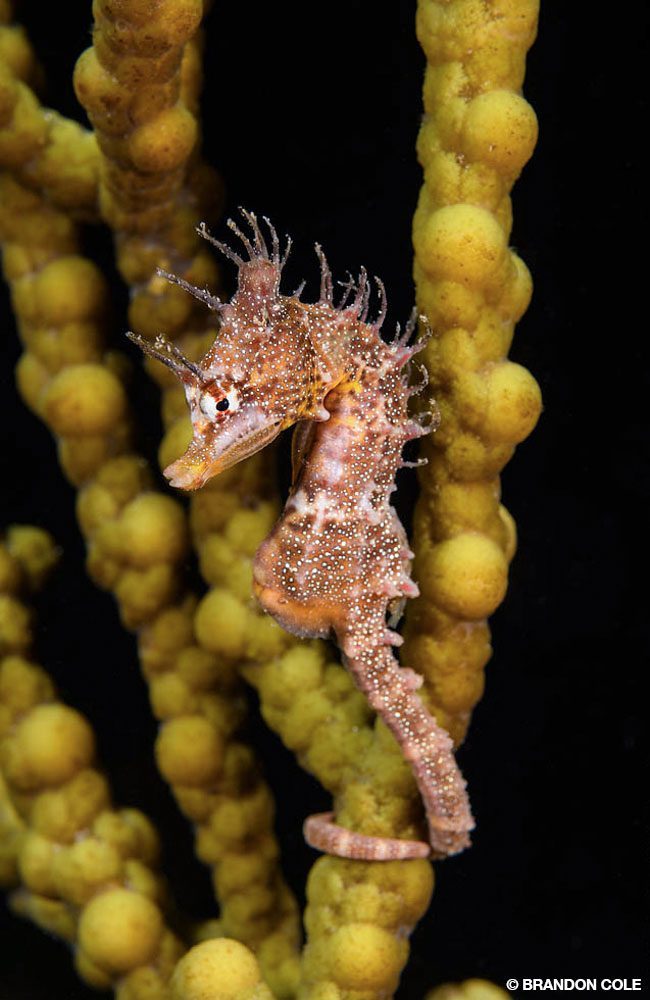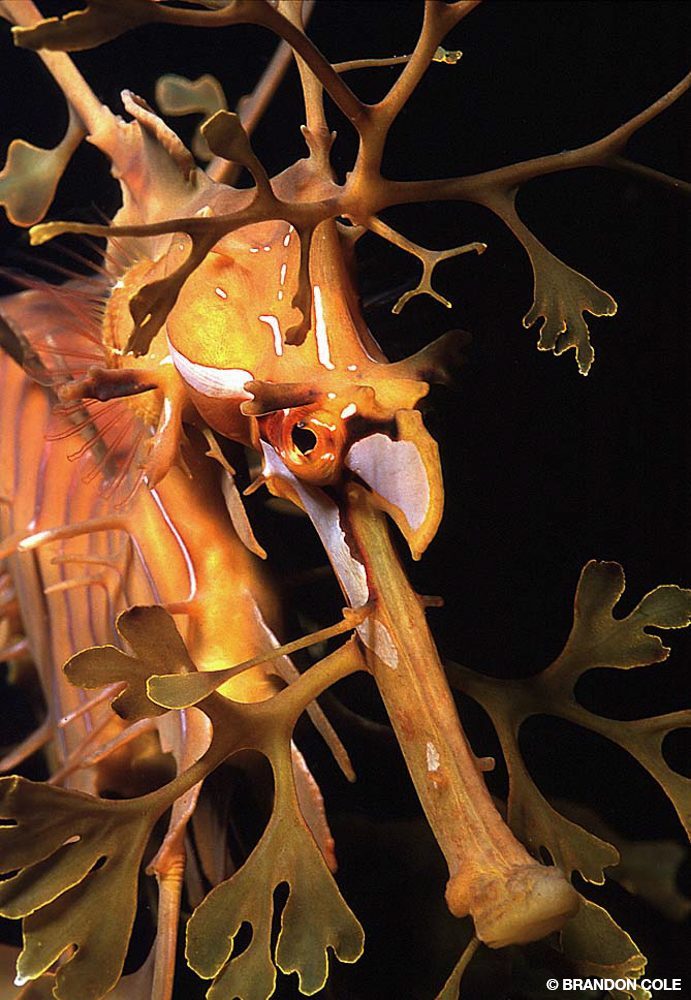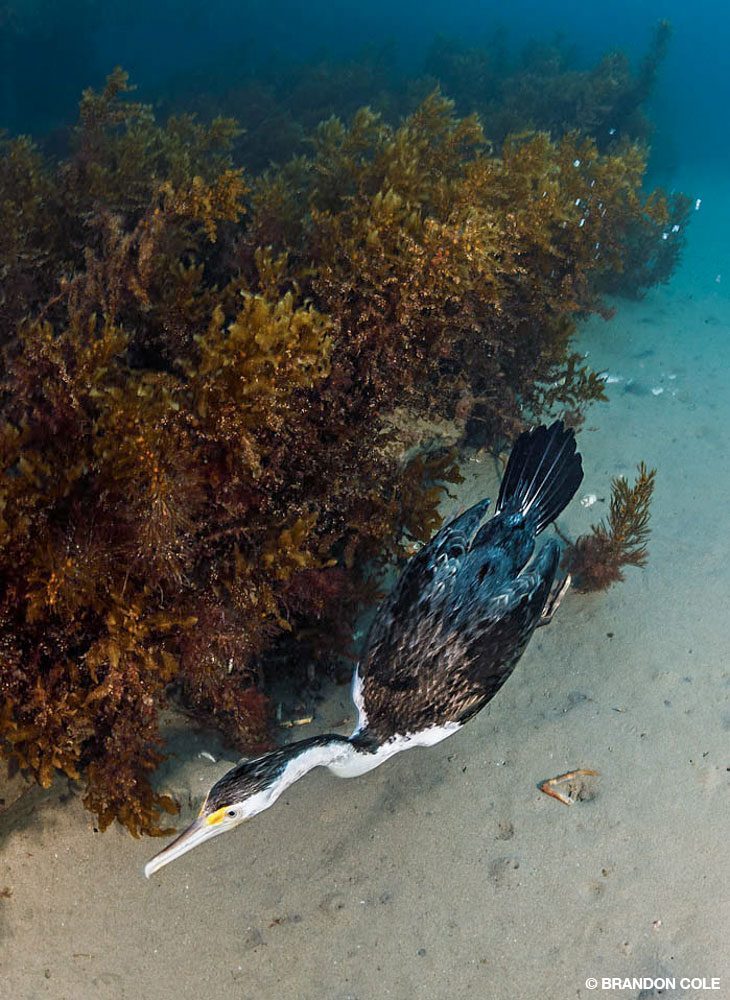It is early June, the onset of winter in the Southern Hemisphere, and an army has just reached its destination. It has marched from the ocean’s depths into the shallows, amassing among the pilings at Blairgowrie Pier in Port Phillip Bay, south of Melbourne, Australia.
Above the waterline, people relax on the 925-foot-long (282-meter-long) concrete pier structure, picnicking, fishing, and pointing at sailboats. Most of them are seemingly unaware of the crustacean horde encamped 10 to 20 feet (3 to 6 meters) below the jetty. Two divers, however, excitedly chatter about spider crabs — and big-belly seahorses, giant cuttlefish, and more — while preparing their gear and donning thick wetsuits for the 54°F (12°C) water.
Thousands of spider crabs with legs spanning 15 inches (38 centimeters) clamber over each other in mounds up to 10 crabs deep. They gather en masse like this each year to molt. The process is a freakishly fascinating bit of crustacean biology in which a noticeably larger version of the same crab slowly and awkwardly crawls backward out of its old carapace to emerge full of promise but acutely vulnerable. Its new shell is dangerously soft until hardening into the formidable armor-plated protection it eventually outgrows and vacates.
Predators are waiting for them. Hungry Port Jackson sharks and 6-foot (1.8-meter) smooth stingrays patrol the pier, timing their visit to feed on tender, newly molted crabs.
For the spider crabs, survival is a numbers game. The risk of being singled out and eaten is statistically lower in a crowd than it would be on their own, so molting simultaneously together makes sense from an evolutionary perspective. Clever crabs apparently know their best chance to survive, thrive, and return to molt again next year requires escaping the killing ground.
As soon as their wobbly legs can support their weight, the crabs crawl along the sandy bottom and climb up pilings into the shadowy safety of the pier’s underside. Here they hide and wait until their exoskeleton hardens so it once again deters predation by rays and sharks. Only then is it safe to descend to the sand, leave the jetty, and return to the deep.
This dramatic trial of life featured in Blue Planet II is one of many wonders to witness in the seas of southern Australia. Exploring the shallow, temperate coastal waters on scuba and snorkel is easier and more productive with the presence of piers such as Blairgowrie, nearby Rye and Portsea jetties, and dozens more extending from the shoreline in Victoria and neighboring South Australia. Though built to support and facilitate industrial and recreational interests such as shipping, boating, and fishing, the artificial structures also provide divers with an ideal means to enter the water by descending stairways — no need to slog through the surf and risk a tumble.
Jetties are magnets for marine life and have become vibrant artificial reefs. An astounding array of invertebrates and fishes, from sponges and starfish to seahorses and cowfish, have colonized metal, concrete, and wood over time. Eclectic communities of sea creatures now call these unique, hybrid seascapes home.
Some species living under jetties are endemic to Australian waters. One such icon — and the official marine emblem of the state of South Australia — is the leafy seadragon, a masterfully camouflaged fish with frilly skin appendages. They headline the star attractions at the Rapid Bay and Second Valley jetties on the Fleurieu Peninsula southwest of Adelaide. Keen-eyed divers who diligently search may spot the 10- to 15-inch-long (25- to 38-centimeter-long) seahorse cousins hiding in plain sight among kelps and seagrasses growing under and alongside these and other piers.
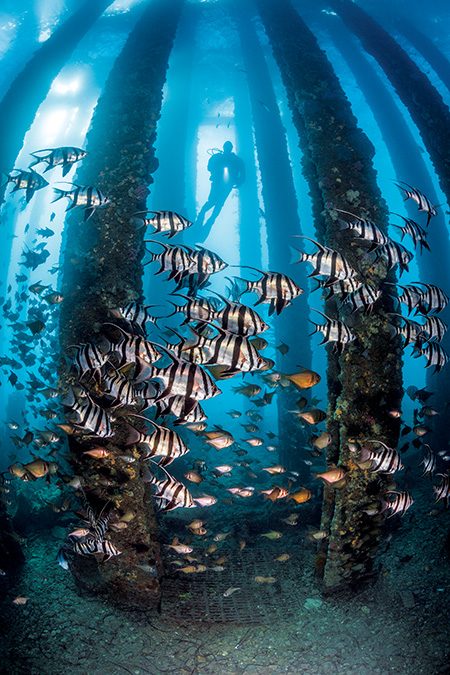
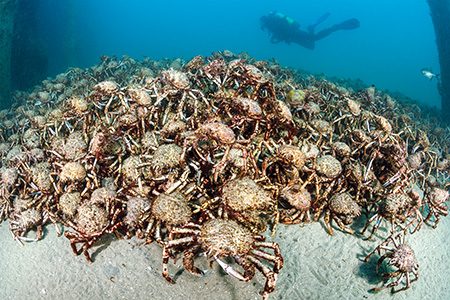
Leafy seadragons feed mainly on small crustaceans called mysids, sucking them into their tube-snouted mouths. Parenting is a team effort: A female transfers 200 to 300 eggs to her partner, placing them under the male’s tail. After fertilization he carries the developing brood until they hatch, and then the miniature seadragons must set off bravely into the big blue.
Divers can participate in citizen science by sharing their underwater seadragon photos with organizations that catalog these stunning fish. Distinctive body markings and branching patterns of the skin appendages help biologists identify individual seadragons and track them over time. Long-term monitoring projects at Rapid Bay have revealed that some seadragons are residents, including an individual nicknamed Wishbone they have seen here repeatedly over seven years. A similar identification program exists for weedy seadragons, which are close relatives of leafies. Divers can regularly find weedies at Flinders Pier on the Mornington Peninsula’s southern coast.
The construction of a jetty forms a new underwater habitat that attracts sea life. Rapid Bay’s original pier was constructed in 1940 to facilitate loading ships that were exporting limestone mined from a nearby quarry. It shut down in 1998, but a different legacy lives on today beneath the waves.
More than 50 fish species have been recorded at this jetty, showcasing greater biodiversity and abundance than the mostly barren sand flats adjacent to the pier. Shoals of old wives and sweepers weave among the forest of pier pilings. Globefish, Shaw’s cowfish, and mosaic leatherjackets stay close to the vertical supports. Fiddler rays glide over the sand, hunting for worms, mollusks, and crustaceans, while blue weed whiting favor the seagrass beds, which are important habitats for many smaller fish and invertebrates.
Seagrass beds are critical nurseries for many species. The plants improve water quality in the area and benefit the ecosystem by functioning as a nutrient sink and the base of a detrital food web for bacteria and animals. Seagrasses are marine flowering plants capable of photosynthesis that normally grow in shallow, sheltered bays. The green plants fare well alongside the jetty because the pier’s structure reduces erosion of the soft substrate from wave action.
Nutrient-rich upwelling of waters borne on the Leeuwin and Flinders currents meet and mix at Rapid Bay Jetty, nourishing the sea life. It’s no surprise that this is a favorite site of divers along Australia’s southern coastline or that it draws people from across the globe. Talking to locals at nearby dive shops is an excellent way for visitors to gather intel about entry points, water conditions, critter locations, no-dive zones, and hazards for this jetty and others.
Pier structures transform flat or gently sloped, soft-bottom locations into more complex and ecologically dynamic three-dimensional habitats. The structure is the catalyst, the foundation on which the profusion of life is built. Rigid substrate such as rock, metal, and concrete is limited underwater and represents valuable real estate. Sessile organisms, including sponges, tunicates, and bryozoans, require a firm substrate for drifting planktonic larvae to settle out of the water, attach, and grow into their adult stages. The blended ecosystem of jetty and reef offers this benefit, allowing these organisms to flourish.
Edithburgh Jetty lies across Gulf St. Vincent, opposite Rapid Bay. Because of its position on the southeastern tip of the Yorke Peninsula and shallow seafloor depths of 10 to 30 feet (3 to 9 meters), Edithburgh is exposed to strong winds and swell from the south and east. When conditions are calm, however, this is a rewarding, easy dive site for critter-watching naturalists and underwater photographers. The pier’s pilings and crossbeams are resplendent with the rich growth of encrusting invertebrates in bright orange, pink, yellow, and blue. These polychromatic assemblages comprise various filter feeders, with sponges, tunicates, and bryozoans as the most conspicuous examples.
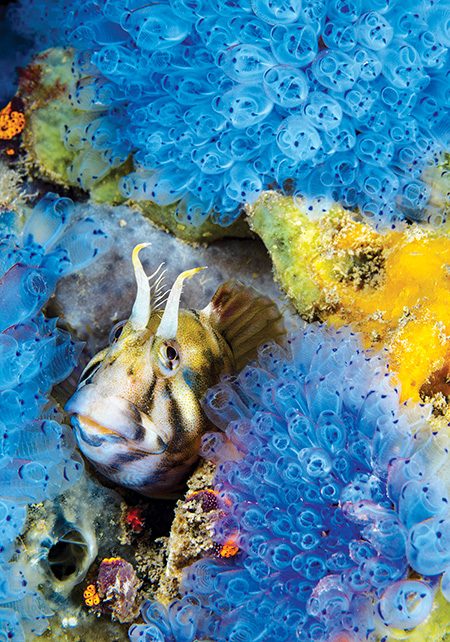
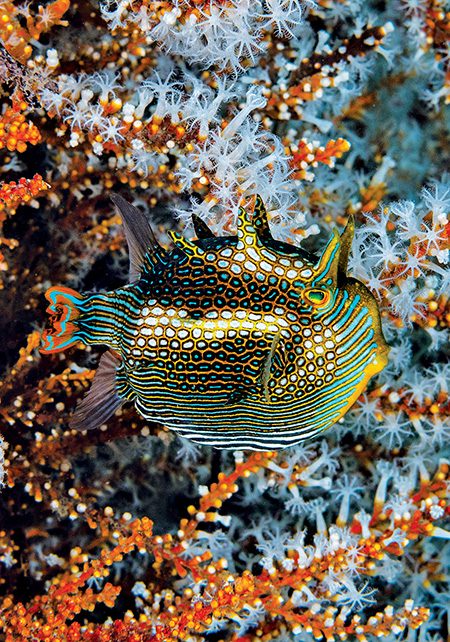
Snails, crabs, shrimps, polychaetes, sea stars, and fishes are among the clumps of filter feeders. The presence of sponges, tunicates, and bryozoans creates additional habitats. Nooks and crannies in the conjoined, living tapestry attached to the jetty’s framework offer abundant living space for other organisms. This microecosystem within the larger jetty and reef hosts its own community of animals going about their daily activities such as sheltering, feeding, reproducing, and competing.
Divers may discover beautiful nudibranchs, elegant feather duster worms with feeding plumes extended, and an assortment of crabs, including bristled sponge crabs hiding from predators under oversized hats made of tunicates. Comical and charismatic Tasmanian blennies peer out from their lairs, bordered by colonies of bluebell tunicates. Dour-faced frogfish, such as whitespotted anglerfish and cryptic tasseled anglerfish, wait patiently in ambush mode. It pays to search diligently in the algae beds just south of Edithburgh Jetty in hopes of spotting shorthead seahorses and southern gulf pipefish clinging to and slithering through sargassum and corkweed plants.
To the north, mixed seagrass and shellfish beds are excellent places for encountering a southern blue-ringed octopus. This dangerous beauty has a venomous neurotoxin to immobilize its prey, primarily crabs. Its paralytic venom is extremely potent and is strong enough to harm humans. Indeed, people have died after being bitten by this small octopus, whose tentacles usually span 8 inches (20 centimeters) or less. Fortunately, they are not aggressive and pose no risk to people admiring them from a safe distance. These octopuses often take refuge inside dead razor clams, tucking their impressively pliable bodies into the narrow opening between the clam’s shells.
No treasure-hunting expedition under Australian jetties, especially Edithburgh, is complete without poking around after the sun goes down. Although many diurnal creatures observed moving about during daytime hours will now be sleeping, the neighborhood’s nocturnal denizens are wide awake and at their most active. They leave their hiding places in the encrusting invertebrates on the pilings and under the uprooted, dead razor clam shells scattered on the bottom to take center stage beneath the pier. Others emerge from the sand where they buried themselves for the day.
Nighttime is the right time to find cephalopods. I once counted seven species during a two-hour night dive at Edithburgh, including a blue-ringed octopus, sand octopus, mating bobtail squids, and a striped pyjama squid.
They are all marvelous beasts, but the striped pyjama squid deserves a special mention. It resembles a marshmallow with eyes and dressed in a prison suit. Glands on the underside of its chubby, 3-inch (7.6-centimeter) body produce a poisonous slime. The pyjama squid typically crawls along the sand but can swim jerkily through the water column by using jet propulsion, sucking water into its mantle cavity, and then forcefully expelling it.
So much of the extraordinary awaits discovery under the jetties in the land down under.
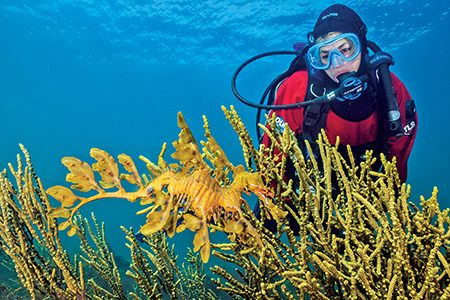
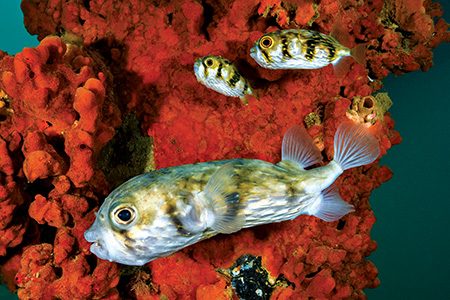
En savoir plus
See more of the marine life under Southern Australia’s jetties in these videos and photo gallery.
© Alert Diver — Q1 2024
